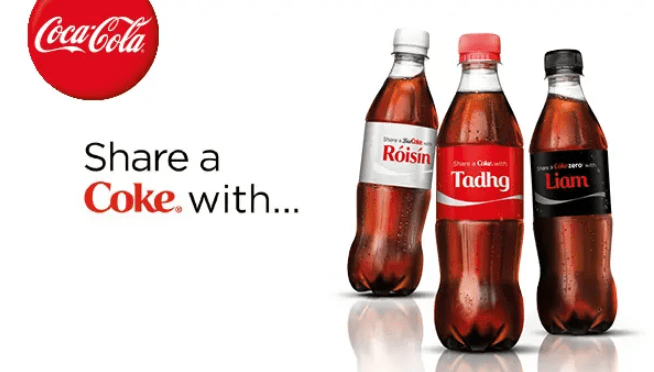No matter how grand your marketing plan may be, you’ll reduce your business’s revenue potential if you assume that people’s purchasing habits are the same everywhere. Factors such as traditional and cultural differences strongly influence how people respond to various brand offerings. That’s why marketing localization is important.
Marketing localization involves adjusting your marketing campaigns to better suit the lifestyle and meet the needs of your international target markets. If done the right way, your business can thrive in there, too.
If you want to break into international markets and become a hit, localize your campaigns by following these steps:
1. Hire Local Experts to do Your Market Research
Before you even figure out how to get a business license for the region you’re targeting, market research is necessary. A marketing campaign without proper market research is already an epic failure.
Market research gives you deep insight into who your target market is and the things that appeal to them.
Your localization campaign can result in backlash, and that will cost you heavy resources if you utilize even the slightest bit of wrong or inaccurate information. Mistakes like this are likely to occur when you directly translate marketing copy and slogans. (Hint: Google Translate won’t help you).
Take Pepsi, for example. In the early ’70s, the corporation launched an international campaign with the slogan, “Come alive! You’re in the Pepsi Generation!”. While this was successful in America, localizing the campaign with that slogan in countries like China and Germany was misleading and offensive.
The slogan read, “Pepsi brings your ancestors back from the dead!” in Mandarin. In German, it read, “Rise from the grave with Pepsi!” You don’t want this to be your story!
Succeeding in your marketing localization campaign would require that your marketing team have a comprehensive understanding of your audience’s demographic characteristics. This includes their native languages, laws, values, and cultural norms, most of which only local marketing experts or professional translators have a deep understanding of.
So by hiring these experts, you can better create a marketing message and a brand that’s relatable.
2. Adapt Your Marketing Collateral to the Local Market
Everything that represents your brand’s products, services, or message is your marketing collateral. These can include both print and digital materials.
Marketing localization doesn’t stop at good translation. For a successful campaign – even with SaaS marketing – you’ll need to adapt your marketing materials to suit the culture and lifestyle of your local target market. So, you might need to tweak your product packaging and promotional strategies to something the local market can relate to.
Samsung is a good example of a brand that adopted this into its localization process. The South Korean brand realized that many French are art lovers and enjoy attending exhibitions at museums.
While trying to break into the French market with its 3D TV sets in 2010, Samsung centered its campaign around that lifestyle: It held an art exhibition at the Petit Palais Museum in Paris.
Samsung displayed popular French paintings in HD on its TV sets. This drew about 600,000 visitors to the museum in the first month. Now Samsung is one of the go-to brands for electronics in France.
At the end of the day, your international potential customers should be able to understand and relate to your brand and its offerings. When they do, it will lead to trust. Trust is what makes sales.
3. Localize Your Website and Social Pages
About 75% of the world’s population does not speak English, so it makes sense that you localize your website and social media pages when developing your international marketing campaign.
If you want to give your local target market a great user experience on your website, you mustn’t forget to do the following:
- Spare them the hassle of doing currency conversions by changing your product pricing structure to display their local currency,
- Create localized digital content such as blog posts, landing pages, and video content to meet the specific needs of your local target market. If you are using QR codes, don’t forget to use a QR code generator to create new codes for your localized pages.
- Accurately translate the content of your website to the language of the market you’re trying to reach. Use a Translation Management System like Transifex for managing your content and localization team.
- Your web page layout, font size, and design should be adjusted to appeal to your potential customers,
- Partner with a local lawyer to make your website’s Terms of Use, Cookies Policy, and Privacy Policy applicable to the area you’re targeting.
Apart from translating your brand’s social media pages, you should also use the networks commonly used in the region you’re targeting.
It will hurt your campaign and marketing efforts to assume Facebook, Twitter, Instagram, and more are the only ones used in every part of the world. For instance, KaKao Story is another popular social media platform in South Korea.
For your brand to be a hit in the South Korean market, you’ll need to have a presence on this network.
4. Connect With a Local Audience by Humanizing Your Brand
When interacting with each other, human beings use slang and communicate in a relatable manner – especially when they share the same culture or speak the same language.
Your marketing campaign will be successful if you incorporate these human characteristics into your marketing mix. After all, you’re trying to sell to humans. Let them know you’re not a faceless brand.
Based on your research, you’ll learn popular words or slang used by the people of the region you’re trying to reach – integrate these words into your product packaging to make your brand and offerings more relatable.
You can get on a personal level with your local target audience like Coca-Cola did with their “Share a Coke” campaign strategy. They replaced the traditional wrapper of Coca-Cola bottles with wrappers that say “Share a Coke with…” and a popular name in that region.
Humanize your brand and connect with your local target audience by featuring their special holidays and festivals in your campaigns, too. For instance, if you’re looking to expand your business to the Chinese market at the beginning of the year, you can connect on a deeper level with your audience by featuring the Chinese New Year in your campaign.
5. Work With Local Influencers
People are more likely to listen to someone they trust. According to a survey, 61% of consumers trust influencers’ recommendations.
So, as part of your localization strategies, partner with influencers in the region your business is trying to reach. This way, the local target audience can quickly get to know, engage with, and trust your brand – resulting in heavy traffic and sales.
A great example of this would be Nike. To establish its presence in West Africa, the brand partnered with local fashion influencer Diana Eneje for the launch of its flagship store in Lagos, Nigeria.
6. Track Marketing Campaigns
Your localization marketing campaign doesn’t end when your prospects become your customers. Tracking your marketing campaigns matters as it lets you know whether you’re getting returns on every dollar spent during your campaign.
You learn how satisfied your customers are, understand their behavior, and gain insight into better ways to meet their needs and run your campaigns.
No matter the type, medium, or channel you use for your marketing localization campaign, these performance metrics will help you monitor its success:
- Conversion Rate: Number of visitors who take your desired action in a campaign.
- Traffic Source: The results can help you decide what source to channel your marketing/ localization effort and resources to attract more visitors.
- Bounce Rate: Percentage of visitors who leave your site. A high bounce rate shows that you need to improve your website’s content.
- Email Open Rate: Percentage of people who open your email compared to the total number of people you send it to.
- Social Reach and Social Engagement: How many social media users saw your content? How many interacted with your content?
Before you start tracking, you must have a clear marketing goal for your campaign. Setting a marketing campaign goal helps you determine what strategies to utilize for your international audiences and what metrics would be the most effective.
In Conclusion
People like to buy from who they know, like, and trust. Localizing your marketing campaigns gives your brand the opportunity to establish a strong connection with your local target audience. This consequently leads to more conversions and sales.
The keys to a winning marketing localization campaign are working closely with local Influencers and local professionals for your market research, Adjust your marketing collateral as needed to suit the needs and lifestyle of your audience, localize your web pages and socials, and humanize your brand. Finally, track your campaign.
Localizing your campaigns with marketing localization can seem intimidating. But once you can incorporate these six steps into your brand marketing strategy, you’ll be on the right path to hitting your marketing goals and succeeding in any foreign market.












